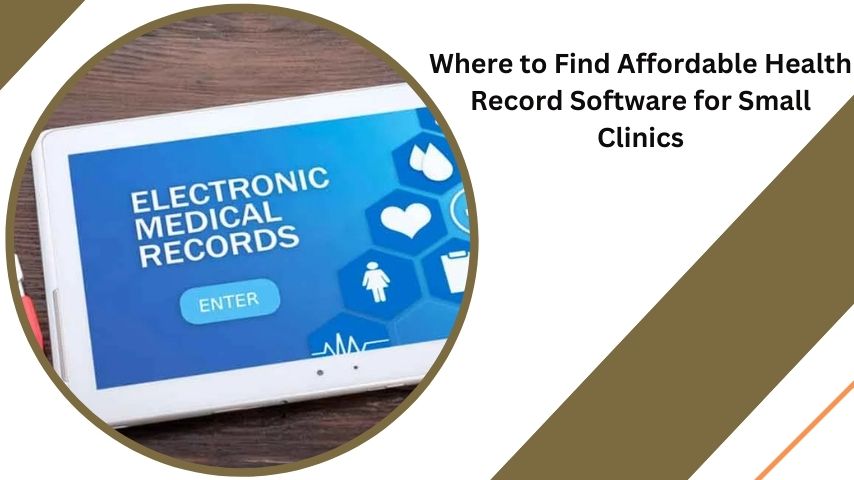
Running a clinic often involves dealing with endless paperwork, scheduling issues, and miscommunication between staff members. These challenges can be frustrating and time-consuming, leaving less room to focus on patient care. After years of struggling with these inefficiencies, I decided it was time for a change. The solution that made the most sense to me was implementing Health Record Software. Here’s how it transformed the way my clinic operates.
That changed when I started using health record software. It transformed the way my clinic operated, making everything faster, more organized, and stress-free. If you are running a healthcare practice and facing similar issues, this blog will help you understand how digital records can improve your workflow.
NOTE: If managing patient records and clinic operations feels overwhelming, it’s time to upgrade to health record software. Start today and experience a more organized, faster, and patient-friendly way of running your practice. Your team and your patients will thank you!
Why I Needed a Better System for My Clinic
Before switching to health record software, my clinic relied on paper files and spreadsheets. This caused many problems:
- Lost or misplaced patient records: Finding a file took too much time. Sometimes, records were incomplete, making patient history hard to track.
- Slow appointment scheduling: The front desk manually entered patient details, leading to long waiting times.
- Billing and insurance issues: Paper invoices caused errors, delays, and miscommunication with insurance providers.
- Limited patient engagement: Patients had to call or visit the clinic for follow-ups, test results, or appointment changes.
It was clear that I needed a system that could organize records, automate routine tasks, and make my clinic run smoothly.
How Health Record Software Transformed My Clinic
Switching to health record software brought major improvements in different areas of my clinic.
1. Patient Records Became Easy to Access
One of the biggest benefits of using digital records is that everything is stored in one place. My team no longer had to search through piles of paper files. With a few clicks, we could:
- Access a patient’s complete medical history instantly.
- Check previous prescriptions, test results, and treatment plans.
- Reduce errors caused by missing or incomplete records.
This saved time for both staff and patients, making every appointment more efficient.
2. Appointment Scheduling Became Faster
Before using health record software, scheduling appointments was a slow process. Staff had to manually check the available slots and update paper calendars. Now, with an automated system, we can:
- Let patients book appointments online at their convenience.
- Avoid overbooking or scheduling conflicts.
- Send automatic reminders to reduce no-shows.
This made the clinic less crowded and reduced waiting times, improving the patient experience.
3. Billing and Payments Became More Organized
Billing used to be a major issue. Paper invoices got misplaced, and insurance claims took too long to process. After implementing health record software, we noticed a huge improvement:
- Bills were generated automatically, reducing errors.
- Insurance claims were processed faster with digital documentation.
- Patients received invoices via email, making payments easier.
As a result, cash flow improved, and staff spent less time fixing billing mistakes.
4. Better Communication with Patients
Patients often called the clinic to check their reports or ask about medications. This took up a lot of time. With health record software, communication became much simpler:
- Patients could access their medical records online.
- Follow-up reminders were sent through emails or text messages.
- Prescription details were available digitally, so there was no confusion.
This helped patients feel more in control of their healthcare while reducing unnecessary calls and visits.
5. Improved Data Security and Compliance
Keeping patient records safe is a top priority. Paper files were at risk of being lost, stolen, or damaged. Digital records provided better security by:
- Storing data on encrypted servers to prevent unauthorized access.
- Offering backup options so no information is lost.
- Helping the clinic comply with healthcare regulations by maintaining accurate records.
With these security measures in place, patients felt confident that their information was protected.
Conclusion
Switching to health record software changed the way my clinic operates. It made patient records easy to access, improved scheduling, simplified billing, and strengthened communication with patients. Staff members are now less stressed, and patients receive better care with fewer delays.
If you are looking to make your clinic more efficient, using health record software is one of the best ways to do it. It saves time, reduces errors, and creates a smoother experience for both patients and healthcare providers.
For more insightful articles related to this topic, feel free to visit ideaepic





Leave a Reply